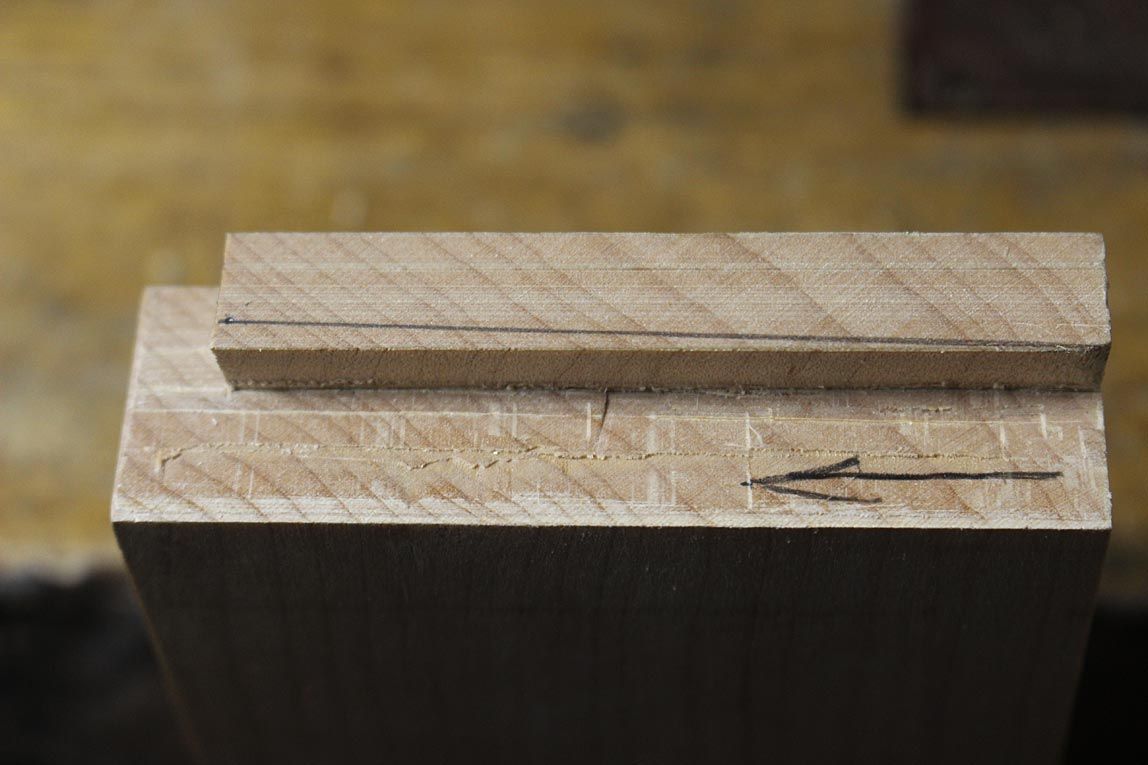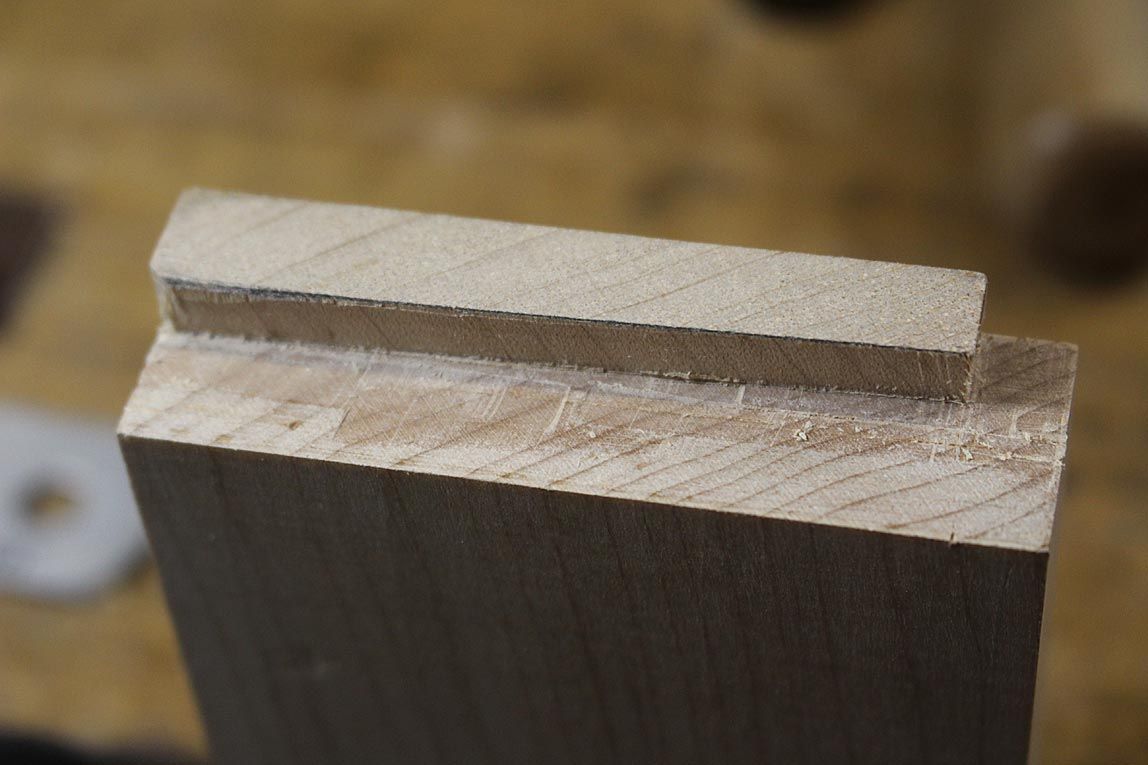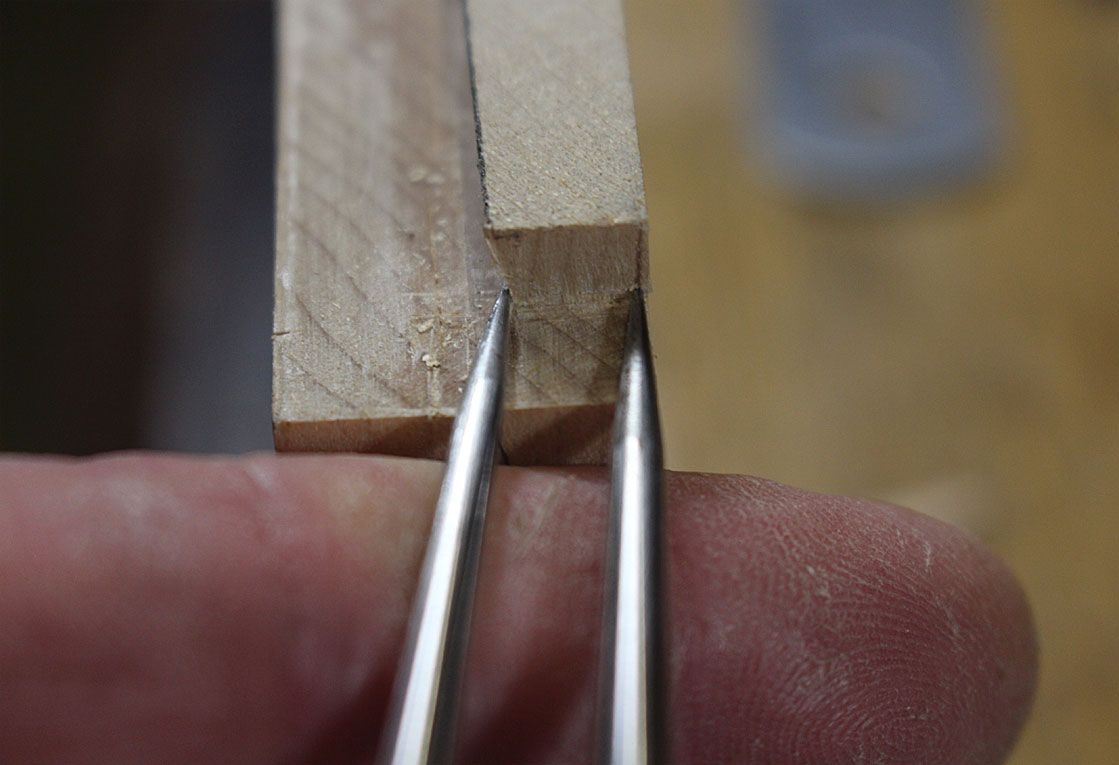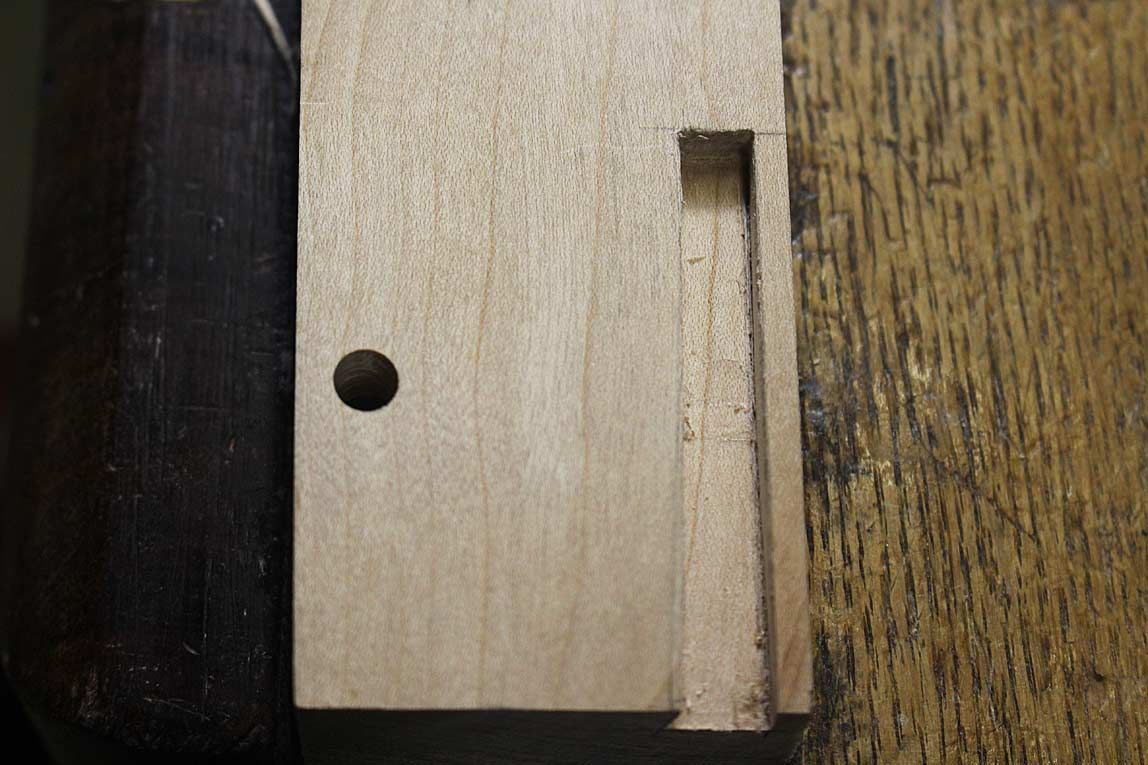Of course I should have used buttons and screws or something simple like that, but I decided that it would be nice to attach the top to my cabinet with sliding dovetails. This would be the goal of this operation (but in this picture the top is lying loose).
IMG_3943.JPG
So I made the first dovetail socket. Cut with a handsaw along a beveled batten.
IMG_3952.JPG
Then chop out the waste in between. You can see a third sawcut in the middle, very usefull to get the chips out of the groove!
IMG_3956.JPG
Plowplaning to final depth (plus a little extra so the dovetail doesn't bind on the bottom of the groove).
IMG_3957.JPG
Then I used my dovetail plane to adjust the width of the tail until it fitted into this groove precisely.
Next issue was determining the exact postion of the second groove at the other end of the cabinet. This should be positioned very precisely. After much turning around in bed at night I came up with this system to mark the exact position of the second dovetail.
A story stick is clamped to the cabinet and I mark the exact position of the bottom of the dovetail with the help of this ruler. I do this on both ends of the dovetail. Then the story stick was used to mark the top.
IMG_3955.JPG
So, full of pride and fully confident I proceeded to slide the top in place. But low and behold, it doesn't fit at all!
After much head scratching I found that the front of the cabinet is about 2mm wider then the back. No idea how that happend, I thought I had marked the shoulders of all 4 rails at the same time. But this is now what I am looking at. Wise lesson: When you want to slide a top on two sliding dovetails, then those two should run parallel. They shouldn't diverge, not even by these two miserable milimeters.
It's easy to adjust the width of the front of the cabinet. Just resaw the tenon shoulders. Not so easy though to decide what to do with the diverging grooves in my top. Starting all over with new wood is NOT an option (the damned thing was expensive enough). I think I am going to glue in a filler piece in the crooked groove (taking care of the correct grain direction) and resaw and chisel the groove. Luckilly it will be the underside so my botch job isn't going to be very visible.




 Reply With Quote
Reply With Quote







